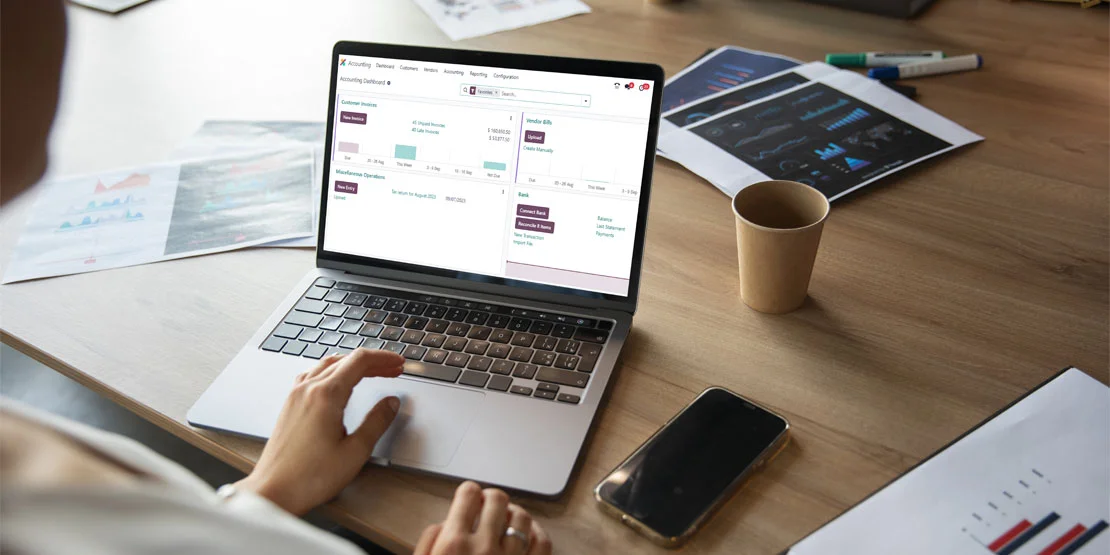How to Develop ERP with Odoo: A Comprehensive Guide

ERP systems have transformed the way firms run their operations, streamlining procedures and increasing overall efficiency. Odoo stands out among the different ERP systems available as a robust and configurable platform that enables organisations to construct bespoke ERP solutions to match their specific demands. In this blog, we'll go into the process of creating an ERP system using Odoo, providing a detailed guide for organisations interested in leveraging its features.

Understanding Odoo: The Foundation for Your ERP
Odoo is an open-source ERP software with a modular system development methodology. It includes a variety of modules for various company tasks such as sales, inventories, human resources, finance, and others. The modular framework enables you to pick and combine certain modules that correspond with your business objectives, resulting in a coherent ERP system that is suited to your requirements.
Needs Assessment and Planning
Before you go into Odoo ERP development, you must thoroughly examine your business needs. Determine the pain spots, difficulties, and places for progress. This assessment will aid your decision-making process when picking and customising Odoo modules.
Make a clear project plan including the scope, objectives, and timetable for your ERP development. Determine the essential modules you'll want, the amount of customisation needed, and the points of connection between distinct functions. A precise strategy from the start enables a more efficient development process.
Module Selection and Customization
Odoo has a multitude of modules designed to address various business tasks. Select the modules that correspond to your company operations and goals. Odoo includes modules to meet your needs, whether it's inventory management, payroll management, or customer relationship management.
While many modules may be utilised out of the box, tweaking may be required to exactly match them with your operations. Because of Odoo's versatility, you may customise existing modules or even develop unique modules from scratch. Collaboration with your development team is essential to ensuring that the modules are set to match your individual needs.
Data Migration and Integration
Transitioning from old systems to a new ERP system can be difficult. By mapping your old data to the new Odoo system, you can ensure a seamless data transfer procedure. To avoid transmitting inaccuracies or duplications, clean and organise your data before conversion.
Consider connecting Odoo with any current software or third-party apps on which your company relies. This connection improves data flow across systems and removes data silos, giving you a complete picture of your operations.
Development and Configuration
Configuring the chosen modules to meet your company operations effortlessly is at the heart of ERP development. Establish processes, user roles, permissions, and dashboards in collaboration with your development team. Odoo's user-friendly interface makes this process easier by allowing you to create workflows and modify parameters without requiring substantial technical experience.
Customizations may include the addition of new fields, the modification of existing forms, and the establishment of automation rules. To guarantee long-term maintainability, it is critical to strike a balance between adapting the system to your needs and sticking to recommended practises.
Testing and Quality Assurance
Thorough testing is essential prior to implementing your Odoo ERP system. Test the functionality, user interfaces, and integrations of each module to detect and correct any flaws or inconsistencies. Quality assurance guarantees that the ERP system works as intended and is in line with your company goals.
To ensure a strong and dependable ERP system, do many forms of testing such as functional testing, usability testing, and performance testing. Include end users in the testing process to collect input and fix any usability issues.
Training and User Adoption
Even the most sophisticated ERP system will not produce the intended outcomes if your workforce is not appropriately taught to utilise it. Provide extensive training to your personnel to ensure they understand how to use the new system, input data, make reports, and take use of its capabilities.
Promote user acceptance by emphasising the advantages of the new ERP system. Address any worries or opposition to change by demonstrating how the technology will streamline procedures, increase productivity, and give useful decision-making insights.
Deployment and Ongoing Support
After testing is completed and people have been educated, it is time to launch your Odoo ERP system. By dividing the deployment into phases or modules, you can ensure a smooth transition. This method reduces disruptions to your business activities and allows you to precisely monitor the system's effectiveness.
Provide continuing support and maintenance after deployment to handle any issues, perform upgrades, and adapt changes as your organisation evolves. Evaluate the ERP system's performance on a regular basis and collect user input to discover areas for development and optimisation.

 USA
USA INDIA
INDIA